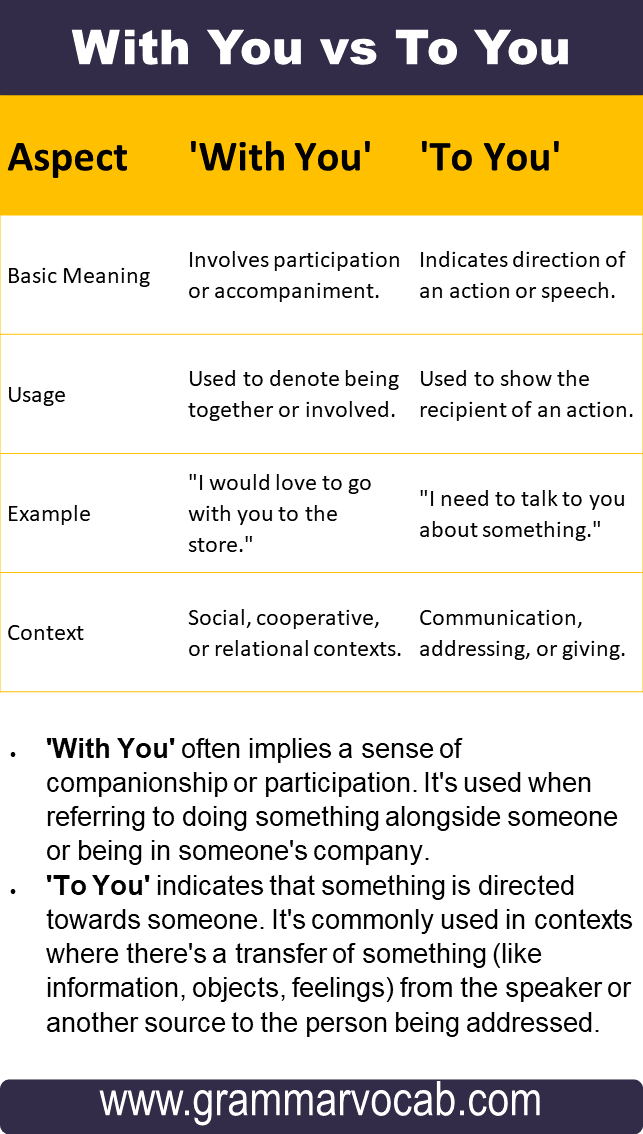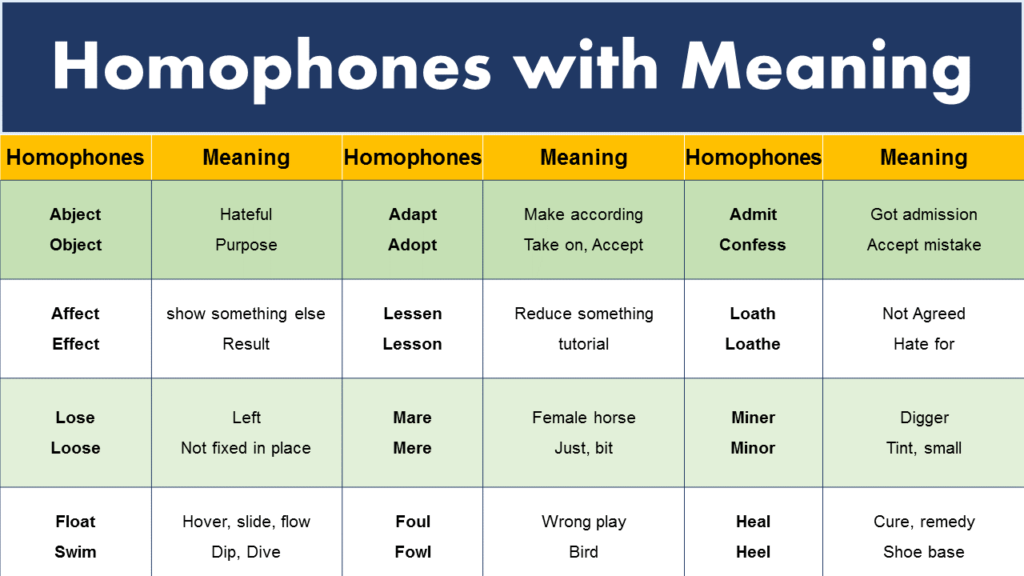English can be a tricky language, especially when it comes to small phrases like “with you” and “to you.” These phrases might seem similar, but they have different meanings and uses. In this article, we’ll explore these differences in detail. We’ll look at examples and tips to help you understand when to use “with you” and when to use “to you.”
What Does “With You” Mean?
The phrase “with you” is used to show involvement or companionship. It means being together with someone or including someone in an activity.
What Does “To You” Mean?
“To you” is used when something is directed towards someone or something is given to someone. It shows the direction of an action or a thought towards a person.
Differences Between “With You” and “To You”
The phrases “with you” and “to you” differ significantly in their usage and meaning in English.
Context and Implication:
-
- “With You”: This phrase typically implies companionship, participation, or association. It is used to indicate that the speaker is or will be in the company of the person they are addressing. For example, “I would love to go to the movies with you” suggests that the speaker wants to accompany the person to the movies.
- “To You”: This phrase is often used to indicate direction or the recipient of an action, comment, or thought. It suggests that something is being directed towards or given to the person being addressed. For example, in “I want to explain this to you,” the speaker is directing their explanation towards the listener.
Grammatical Role:
-
- “With You”: Functions as a prepositional phrase where ‘with’ is the preposition and ‘you’ is the object. It often indicates being together or involved in the same activity.
- “To You”: Also a prepositional phrase with ‘to’ as the preposition. However, it denotes direction, targeting, or the intended recipient of an action or message.
Usage in Sentences:
-
- “With You”: Commonly used in contexts that involve shared activities, emotional connection, or physical proximity. E.g., “I feel happy when I am with you.”
- “To You”: Often used when conveying something (like a message, a gift, an action) towards someone else. E.g., “I want to give this gift to you.”
Emotional Connotation:
-
- “With You”: Can have a more intimate or personal connotation, emphasizing a shared experience or relationship.
- “To You”: More neutral, focusing on the action of delivering, speaking, or directing something towards another person.
Interchangeability:
-
- While in some contexts they might seem interchangeable, they usually are not. For example, “I am speaking with you” (having a conversation together) is different from “I am speaking to you” (directing my speech at you).
When to Use “With You” and “To You”
- Use “with you” when talking about doing something together or agreeing.
- Use “to you” when you are directing something towards someone or giving something.
Avoiding Common Mistakes:
- Don’t use “with you” when you mean to give or send something.
- Don’t use “to you” when you mean to participate or join with someone.
Practice Examples
Let’s practice with some examples to see if you can choose the right phrase:
- “I am planning a trip ______.” (with you/to you)
- “This email is addressed ______.” (with you/to you)
- “I will be attending the meeting ______.” (with you/to you)
- “My heartfelt condolences go ______.” (with you/to you)
Answers:
- “I am planning a trip with you.”
- “This email is addressed to you.”
- “I will be attending the meeting with you.”
- “My heartfelt condolences go to you.”
Must Try:
OK vs. Okay
Simpler or More Simple
She and I or Her and I




